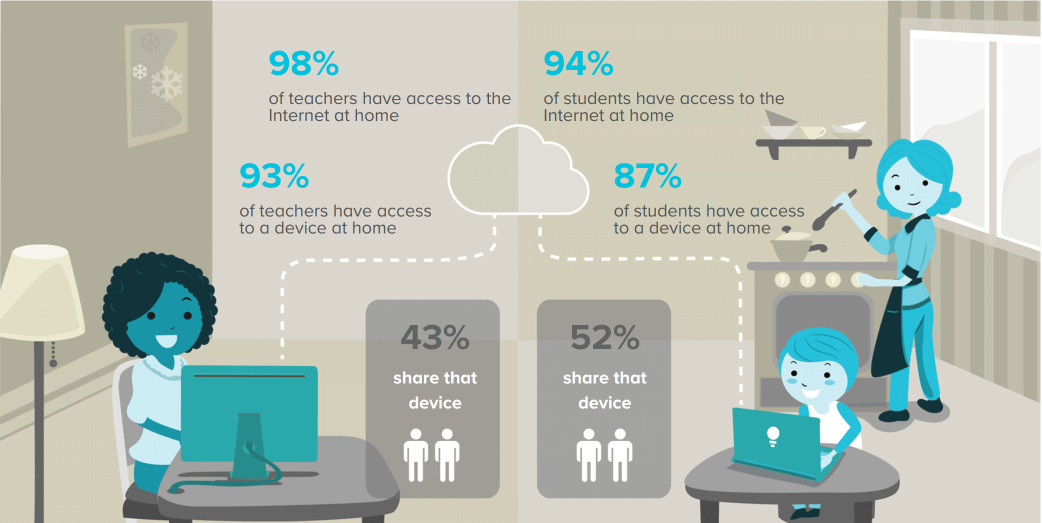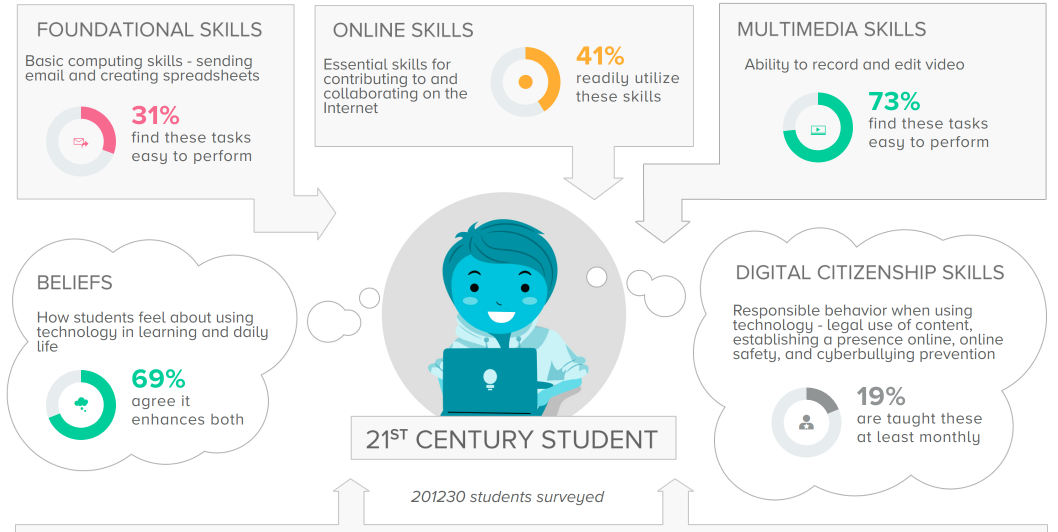|
The first of the 5 ISTE Standards for Leaders calls educators to be advocates for Equity and Citizenship: Leaders use technology to increase equity, inclusion, and digital citizenship practices. Most discussions of equity tend to center around access to devices and to the internet. Phrases such as "the digital divide" imply that there are those who have access to technology and those who do not, and while there are some who do not have access to devices or to the internet either at home or at school, the number is surprisingly low. During the 2017-18 school year more than 200,000 students in Region 10 responded to the BrightBytes Technology and Learning survey. 94% indicated that they have access to the internet at home, and 87% indicated they had access to a device at home. Of the more than 20,000 teachers and administrators who responded, 87% stated that they have or can get access to devices for students when needed, and 67% indicated that student devices were available at a minimum of a 2:1 ratio. While there is some variance in the robustness of both devices and infrastructure, the difference in levels of access is actually more of a continuum than a gap. Two of the indicators for the Equity and Citizenship Advocacy standard for leaders are to:
There are any number of factors contributing to this lack of opportunity for students' learning to be empowered by technology: lack of teacher efficacy, test-based accountability systems, prescribed coverage of curriculum in sequence governed by time rather than by mastery, and lack of priority by leadership to name a few. As leaders we bear the responsibility of not only advocating for equity in opportunity, but in creating a culture where teachers and learners are empowered to use technology in innovative ways to enrich teaching and learning. If we don't, who will?
Comments are closed.
|



 RSS Feed
RSS Feed